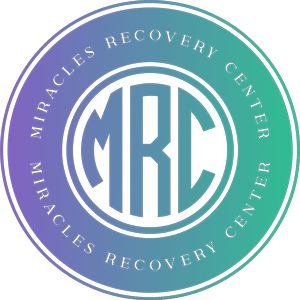
It’s never easy when someone relapses from addiction recovery. Not just for the addict who veered off their path, but for the loved ones of the addict, too. When a relapse happens, it’s important to remember that a relapse is just a bump in the road, not a complete failure.
Table of Contents
What is a Relapse in Addiction Recovery?
Addiction is so commonplace in our society, with nearly 1 in 10 Americans suffering from some form of addiction. If someone suffering from a drug or alcohol use disorder does seek treatment and completes a program, they are what is known to be “in recovery” from their addiction. Addiction is a chronic disease that has no “cure”. Rather, recovery is a practice of becoming healthier versions of themselves.
A relapse in addiction recovery is when a recovering addict uses drugs, or alcohol again after completing a treatment program. There are several stages of a relapse, including emotional, mental, and finally physical. Not everyone who relapses goes through each stage. Those who do, usually show warning signs before they relapse. Some of those warning signs could include erratic behavior, missing work or scheduled appointments, being caught in lies, physical changes, and/or distancing themselves from their loved ones.
When a person suffering from an alcohol or substance use disorder relapses, their mental health can take a toll. Feelings of guilt and embarrassment are common. It can be heartbreaking, shameful, and even something they don’t want to believe they did. It can even hinder family relationships. Once the admittance happens, though, there is a road back to recovery if they choose it.
The Connection between Mental Health and Recovery
Mental health plays a huge role in our emotional health, as well as our physical health. The state of our mental health could also augment our ability to make clear-headed decisions, think ahead, and determine the possible consequences of our actions. When someone is suffering from a mental illness or having an issue with mental health, they are more likely to make a decision that impacts their life in a negative way.
For instance, if someone relapses from addiction recovery, they could use defense mechanisms to deal with what has happened. This would further their mental health issue, as well as set them back in their recovery journey.
What are Defense Mechanisms?
Defense mechanisms are practices that people adapt to detach themselves from troublesome events, actions, or thoughts. These can be either positive or negative. For example, sublimation is a positive defense mechanism in which someone chooses to channel strong emotions and feelings into an appropriate activity such as art, or dancing. So instead of lashing out at loved ones, they re-channel those emotions.
More likely than not, negative defense mechanisms are used by addicts when they relapse because they can be full of shame, and disbelief. They subconsciously use a defense mechanism to deflect the truth from themselves and others. It’s a way to rationalize a situation, or even resist change.
Some examples of negative defense mechanisms are:
- Denial– A failure to acknowledge truth or emotion or to admit it into consciousness.
- Rationalization-Attempting to explain or justify behavior with logical reasons.
- Projection– Projecting your feelings by accusing someone of feeling the way you do.
- Repression– Your unconscious mind keeps something traumatic from your conscious mind.
- Displacement-Transferring negative feelings you had around or about someone to somebody else..
- Regression– Reverting to an earlier stage of development in response to a negative situation.
- Avoidance– Dismissing thoughts or feelings that are not comfortable, or staying away from people, situations, or places associated with uncomfortable feelings or thoughts.
- Blame shifting-Similar to projection, but taking it one step further, and blaming the other person for their own unwanted feelings, desires, or motives.
Denial & Blame Shifting After a Relapse
Defense mechanisms are especially prevalent after someone lets themselves down, which is often the case when a recovering addict relapses. Having an idea in their head of how life after treatment will go, doing all the right things, and being so sure they will keep on their path, then veering off the path could be too much to handle.
When these feelings come up, it is easy to feel bad, or triggered and react with unconscious patterns of behaviors using defense mechanisms. Two of the most common defense mechanisms used after a relapse is either denial or blame-shifting.
Denial
Denial typically comes in two forms. Type A denial is when a person understands and sees that they have a problem. When asked about the problem they deny it, knowing that it is true. This type of denial is lying.
Type B denial is when a person is either totally or even just somewhat blind to a problem that they are experiencing. Through many types of rationalization, avoidance, and self-deception, a person can actually convince themselves they don’t have an issue. This happens even when their issue is obvious to everyone else around them. This type of denial comes from unconsciously being dishonest or being blind to your own situation.
Blame Shifting
Blame shifting is a bit different because it involves outward actions. People with alcohol addiction or drug addiction who relapsed might feel negative about their actions, but can’t come to terms with the consequences, or take responsibility. The easiest way to not assume responsibility is to blame someone else for their actions.
If someone relapsed by binge drinking at a party, they might say “I wouldn’t have drank if my girlfriend didn’t break up with me. It’s not my fault she broke my heart.” If it was a week-long bender, they could say “It was only because my friend brought cocaine with us on vacation that I used it. If he didn’t bring it, and it wasn’t a vacation, I wouldn’t have relapsed at all.” These examples show someone who was conscious of their actions, and that their actions really weren’t the fault of their heartbreak or friend. Unlike denial, blame-shifting is a fully conscious choice.
If someone who has relapsed notices they are using any of these defense mechanisms, they may also notice they need help to get back on the path of recovery. This is the time to start back at step 1.
The Path Back to Recovery
The path back to recovery looks different for everyone, as the reasons they relapsed are all different, too. The first move on the path back is to re-do step 1 and admit there is a problem. Then it’s time to pick up the phone and get accountable. Calling a loved one, or a sponsor and telling them help is needed. Going to a narcotics anonymous or alcoholics anonymous meeting, even support groups, where encouragement to start again is waiting would be a great step, also.
After a relapse, many people need to complete a whole treatment plan again, starting with detox to manage withdrawal symptoms. Calling Miracles Recovery Center, in Port St. Lucie, FL could be the best next step. Speaking with an admissions coordinator that can help through the initial stages of a new path takes the details out of your hands, so focusing on inner healing can start.










